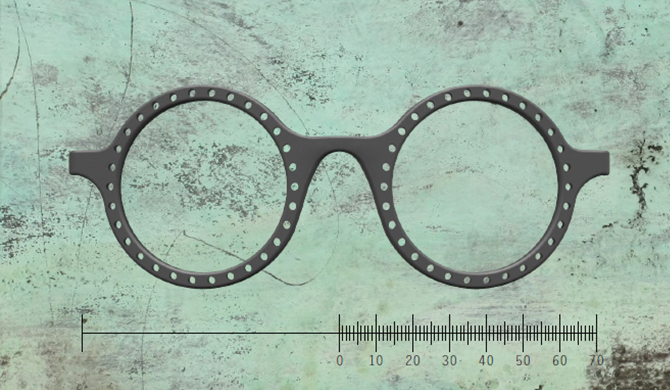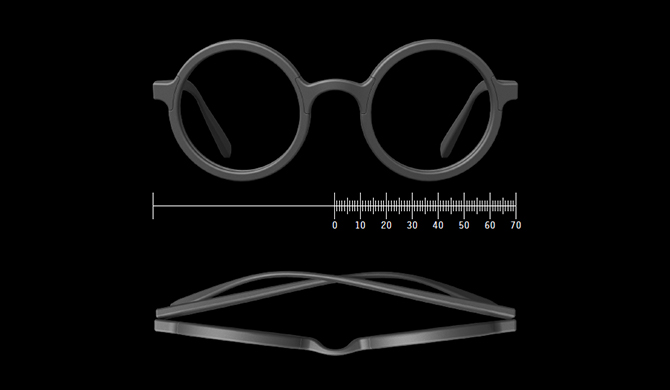


“round” –a concept that explores forms which trace back to the origin of glasses
Looking back into the history of spectacles I discovered that the very earliest models were round. It was certainly determined by the shape of the lenses, but if you think of it, it is also how children would draw glasses naturally.
My research confirmed that round-shaped glasses suited all kinds of people, from all over the world.
Of course we studied images of the many famous people who are recognized for wearing round glasses. Such include figures like John Lennon, Steve Jobs, the architect Le Corbusier, and the famous Mahatma Gandhi.
In terms of designers, the Italian maestro Achille Castiglioni is a personal icon for me.
Round shaped glasses represent an archetype that can historically be traced back to the earliest references. At the same time is still a shape which feels appropriate and fresh today. It is interesting how round is the most generic form of glasses, yet it always seems special on whoever wears them.
The first pair of glasses I ever had were round-shaped. At the time I wasn’t really thinking about who I wanted to be or look like. It just so happened that I chose the simplest design. Today we have the pleasure to change and wear different glasses according to the occasion, how we feel, or what we wear, and I feel that there are various ways in which to enjoy round glasses.

















